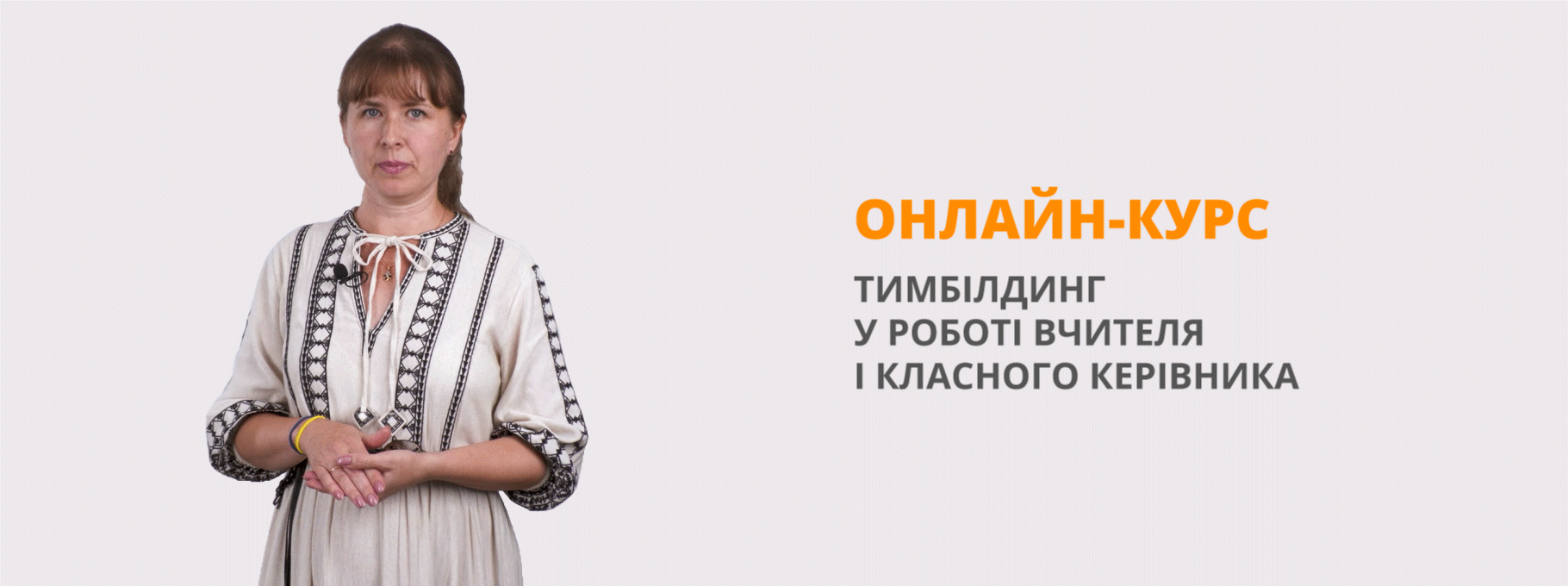Поведінка людей під час надзвичайних ситуацій (землетрус, пожежа)
Тема уроку: Поведінка людей під час надзвичайних ситуацій (землетрус, пожежа)
Мета уроку:
навчальна:
- ознайомити учнів з новою лексикою та активізувати її вживання в мові, розширити знання учнів про проблеми екології та навколишнього середовища, природні катаклізми;
- збагачувати словниковий запас учнів;
- практикувати учнів у читанні тексту з метою отримання загального уявлення (skimming) та максимально повного й точного розуміння всієї інформації, що міститься в тексті (scanning);
- вдосконалювати навички читання й усного мовлення;
- формувати навички вимови; вдосконалювати навички монологічного висловлювання з опорою на лексико-граматичну структуру;
розвиваюча:
- розвивати культуру спілкування й мовленнєву реакцію учнів;
- запитувати і надавати інформацію;
- вміти здобувати інформацію з текстів, висловлювати власні думки і припущення;
- розвивати в учнів увагу, пам'ять, кмітливість та мовну здогадку;
виховна:
- виховувати самостійність, зацікавленість у вивченні англійської мови, чіткість висловлення думки;
- виховувати ввічливе ставлення один до одного.
Методи навчання: розповідь, бесіда, пояснювально-ілюстративний, робота в групах та парах, робота з роздатковим матеріалом, відео.
Тип уроку: комбінований.
Навчально – методичне забезпечення уроку: картки із завданнями; зображення; телевізор; дошка.
Очікуваний результат:
учень повинен знати:
- новий лексичний матеріал;
- основні проблеми екології та навколишнього середовища, природні катаклізми;
учень повинен вміти:
- вживати новий лексичний матеріал у мові;
- читати текст з метою отримання загального уявлення;
- максимально розуміти всю інформацію, що міститься в тексті;
- усно висловлювати власні думки і припущення з опорою на лексико- граматичну структуру;
- запитувати, здобувати та надавати інформацію з текстів.
План уроку
- 1.Організаційний момент (Introduction).
- 1)Привітання (Greeting).
T.: Good morning, boys and girls!
Ps: Good morning, teacher!
T: I'm glad to see you!
Ps: We're glad to see you too!
- 2)Повідомлення теми та мети уроку (Announcing the theme of the lesson).
T: The topic of our today's lesson is «Natural disasters». We will learn some active vocabulary and revise active grammar material. Also we will read a text about some natural disasters and even watch videos. So be active and cooperative! You'll have good marks and a good mood!
- 2.Введення в іншомовне середовище (Warming-up).
- 1)Фонетична зарядка.
Earthquakes are so terrible,
They do so much damage.
Houses, towns, cities destroyed,
In just a few seconds.
Many people lose their lives,
And many more are injured.
All most people can do,
Is pray for their loved ones lives.
- 2)Лексична зарядка.
T.: How are you today?
What is the weather like today?
What natural disasters do you know?
What damage can they cause?
Основна частина уроку
- 3.Введення нового лексичного матеріалу.
- T.: Listen and repeat the words.
Учні дивляться відео про різні природні катаклізми та повторюють слова.
На дошці є зображення різноманітних стихійних лих. Учні повторюють слова за вчителем та перекладають їх. (Додаток 1)
- 4.Закріплення лексичного матеріалу.
- 1)T.: Match the photos with the words.
Вчитель роздає учням роздатковий матеріал із зображення стихійних лих. Завдання учнів підписати ці зображення.
tsunamihurricaneearthquake
avalanchevolcanic eruptionflood
- 2)Pair work. (Робота в парах)
- «What are these things?» («Що це?»)
- T: You have some riddles. Work in pairs and guess what are these things.
Учні отримують загадки про стихійні лиха, їх завдання в парах розгадати ці загадки.
- §A sudden strong shaking of the ground: (earthquake)
- §A storm with very strong winds: (hurricane)
- §A long time when there is not enough rain: (drought)
- §Bursting suddenly with a very loud noise: (explosion)
- §A sudden bright light in the sky when there is a storm: (lightning)
- 5.Watching videos. (Перегляд відео).
- 1)Pre-watching (Етап підготовки до перегляду).
- Group work. Survival techniques. Writing and speaking.
Teacher split students into two groups. Each group has a certain disaster (e.g. earthquake, fire). The task of each group is to present survival techniques to its disaster.
Учні поділені на дві групи. Кожна група має конкретне стихійне лихо (одна землетрус, інша пожежу). Завдання групи полягає у тому, щоб скласти поради для людей при тій чи іншій природній катастрофі.
Teachers put some key expressions on the blackboard which pupils can use.
На дошці є ключові фрази як подавати поради для людей.
T: So, pupils your task is to present the survival techniques for earthquake and fire. You have to say what people can't do and what people can't do during these natural disaster. Use key expressions from the blackboard
KEY EXPRESSIONS:
ØYou should always …
ØAt no time should you ever…
ØNever…
ØIt would be a good idea to …
ØThe most important thing is …
ØAlways remember to …
ØMake sure that …
Then each group presents its poster.
Кожна група презентує свій плакат.
Можливі варіанти відповідей учнів:
EARTHQUAKE
vif you hear the warning of a possible earthquake, take the necessary things, food, documents, and leave the house;
vbefore leaving the flat or house, turn off electricity to prevent fire;
vdon't panic; act quickly and quietly;
vkeep away from the buildings;
vgo to the parks or school playing fields, assemble in open spaces;
vif it happens suddenly and you have no time to go out, the best place to shelter is in a doorway or under a heavy table.
FIRE
vwrap a wet blanket around yourself;
vcover nose and mouth with damp cloth;
vuse the nearest emergency exit;
vdon't panic;
vopen the window of the room you are in;
vraise the alarm and call the fire brigade (if possible);
vyell “Fire” to alert others;
vstay close to the floor;
vif you see smoke, evacuate the building quickly and quietly.
- 2)While-watching (Етап перегляду відео).
T.: So, pupils watch videos very attentively and put down some new ideas which you don't mention in your posters.
Учні повинні дивитися відео і записувати правила поводження, яких вони не мають у своїх плакатах.
- 3)Post-watching (Етап перевірки розуміння змісту переглянутих відео). Speaking.
Pupils discuss pieces of advice for people during earthquake and fire which they didn't write in their posters.
Учні обговорюють правила поводження людей під час землетрусу і пожежі, яких вони не згадали у своїх плакатах.
T.: What new ideas do you hear in videos?
- 6.Reading (Розвиток навичок читання)
- 1)Pre-Reading (Етап підготовки до читання).
T.: Look and guess. Tick the true sentences.
Вчитель роздає роздатковий матеріал (Додаток 2). Учні повинні відгадати правильні речення.
- 2)While-Reading (Етап читання).
T.: Read the text and check your guesses.
Учні отримують текст і перевіряють правильність своїх здогадок.
A hurricane is a very big storm with heavy rain and strong winds. Hurricanes can be a thousand kilometres across. They last for more than a week. The winds are 120 to 300 kilometres an hour. Sometimes the hurricane winds produce tornadoes.
Hurricanes come between May and November when the ocean is warm. A hurricane starts over the ocean and moves from east to west. It moves about 25 kilometres every hour. When it comes on land, it causes terrible floods and people must move to a different town. Some years there are a lot of hurricanes and some years there aren't many.
Every hurricane has a name. In August 2005 there was a very strong hurricane in the USA. Its name was Katrina. The winds destroyed many houses, trees and cars and there were terrible floods, especially in the beautiful old city of New Orleans. Many people died. It was the worst natural disaster in the history of the USA.
- 3)Post-Reading (Етап перевірки розуміння змісту тексту)
T.: Are the sentences True or False?
Учні отримують завдання із реченням, вони повинні визначити, чи ці речення правдиві, чи ні, відповідно до тексту.
Write True or False.
- a)A hurricane is a very big snow storm . (False)
- b)Hurricanes come between November and May. (False)
- c)Hurricanes move about 25 kilometres every hour . (True)
- d)There are a lot of hurricanes every year. (False)
- e)Every hurricane has a name. (True)
- f)The worst natural disaster in America was in 2005. (True)
Заключна частина уроку
- 7.Giving the home assignment (Повідомлення домашнього завдання).
T: At home you have to do this puzzle. Your task is to find the hidden words. Also you will have to make a project about one of natural disaster. (Учні повинні розв'язати кросворд (Додаток 3), а також виконати проект про одне із стихійних лих).
- 8. Summarizing and evaluation (Підсумок уроку).
T: “Our lesson is almost over. I hope you like it and had fun. Thank you for your work. I think our lesson has been a success. All of you were active today and worked carefully. Your marks are... Thank you very much for your work. The lesson is over. Good-bye.”
Тема уроку: Поведінка людей під час надзвичайних ситуацій (землетрус, пожежа)
Мета уроку:
навчальна:
- ознайомити учнів з новою лексикою та активізувати її вживання в мові, розширити знання учнів про проблеми екології та навколишнього середовища, природні катаклізми;
- збагачувати словниковий запас учнів;
- практикувати учнів у читанні тексту з метою отримання загального уявлення (skimming) та максимально повного й точного розуміння всієї інформації, що міститься в тексті (scanning);
- вдосконалювати навички читання й усного мовлення;
- формувати навички вимови; вдосконалювати навички монологічного висловлювання з опорою на лексико-граматичну структуру;
розвиваюча:
- розвивати культуру спілкування й мовленнєву реакцію учнів;
- запитувати і надавати інформацію;
- вміти здобувати інформацію з текстів, висловлювати власні думки і припущення;
- розвивати в учнів увагу, пам'ять, кмітливість та мовну здогадку;
виховна:
- виховувати самостійність, зацікавленість у вивченні англійської мови, чіткість висловлення думки;
- виховувати ввічливе ставлення один до одного.
Методи навчання: розповідь, бесіда, пояснювально-ілюстративний, робота в групах та парах, робота з роздатковим матеріалом, відео.
Тип уроку: комбінований.
Навчально – методичне забезпечення уроку: картки із завданнями; зображення; телевізор; дошка.
Очікуваний результат:
учень повинен знати:
- новий лексичний матеріал;
- основні проблеми екології та навколишнього середовища, природні катаклізми;
учень повинен вміти:
- вживати новий лексичний матеріал у мові;
- читати текст з метою отримання загального уявлення;
- максимально розуміти всю інформацію, що міститься в тексті;
- усно висловлювати власні думки і припущення з опорою на лексико- граматичну структуру;
- запитувати, здобувати та надавати інформацію з текстів.
План уроку
- Організаційний момент (Introduction).
- Привітання (Greeting).
T.: Good morning, boys and girls!
Ps: Good morning, teacher!
T: I’m glad to see you!
Ps: We’re glad to see you too!
- Повідомлення теми та мети уроку (Announcing the theme of the lesson).
T: The topic of our today's lesson is «Natural disasters». We will learn some active vocabulary and revise active grammar material. Also we will read a text about some natural disasters and even watch videos. So be active and cooperative! You'll have good marks and a good mood!
- Введення в іншомовне середовище (Warming-up).
- Фонетична зарядка.
Earthquakes are so terrible,
They do so much damage.
Houses, towns, cities destroyed,
In just a few seconds.
Many people lose their lives,
And many more are injured.
All most people can do,
Is pray for their loved ones lives.
- Лексична зарядка.
T.: How are you today?
What is the weather like today?
What natural disasters do you know?
What damage can they cause?
Основна частина уроку
- Введення нового лексичного матеріалу.
T.: Listen and repeat the words.
Учні дивляться відео про різні природні катаклізми та повторюють слова.
На дошці є зображення різноманітних стихійних лих. Учні повторюють слова за вчителем та перекладають їх. (Додаток 1)
- Закріплення лексичного матеріалу.
- T.: Match the photos with the words.
Вчитель роздає учням роздатковий матеріал із зображення стихійних лих. Завдання учнів підписати ці зображення.
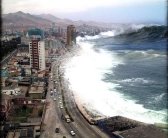
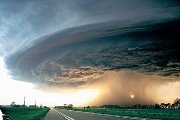
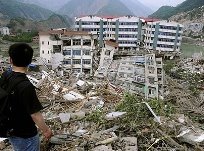
tsunami hurricane earthquake
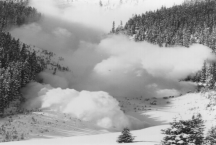
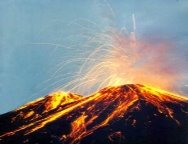
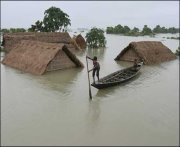
avalanche volcanic eruption flood
- Pair work. (Робота в парах)
«What are these things?» («Що це?»)
T: You have some riddles. Work in pairs and guess what are these things.
Учні отримують загадки про стихійні лиха, їх завдання в парах розгадати ці загадки.
- A sudden strong shaking of the ground: (earthquake)
- A storm with very strong winds: (hurricane)
- A long time when there is not enough rain: (drought)
- Bursting suddenly with a very loud noise: (explosion)
- A sudden bright light in the sky when there is a storm: (lightning)
- Watching videos. (Перегляд відео).
- Pre-watching (Етап підготовки до перегляду).
Group work. Survival techniques. Writing and speaking.
Teacher split students into two groups. Each group has a certain disaster (e.g. earthquake, fire). The task of each group is to present survival techniques to its disaster.
Учні поділені на дві групи. Кожна група має конкретне стихійне лихо (одна землетрус, інша пожежу). Завдання групи полягає у тому, щоб скласти поради для людей при тій чи іншій природній катастрофі.
Teachers put some key expressions on the blackboard which pupils can use.
На дошці є ключові фрази як подавати поради для людей.
T: So, pupils your task is to present the survival techniques for earthquake and fire. You have to say what people can’t do and what people can’t do during these natural disaster. Use key expressions from the blackboard
KEY EXPRESSIONS:
- You should always …
- At no time should you ever…
- Never…
- It would be a good idea to …
- The most important thing is …
- Always remember to …
- Make sure that …
Then each group presents its poster.
Кожна група презентує свій плакат.
Можливі варіанти відповідей учнів:
EARTHQUAKE
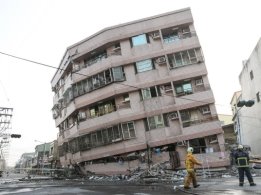
- if you hear the warning of a possible earthquake, take the necessary things, food, documents, and leave the house;
- before leaving the flat or house, turn off electricity to prevent fire;
- don’t panic; act quickly and quietly;
- keep away from the buildings;
- go to the parks or school playing fields, assemble in open spaces;
- if it happens suddenly and you have no time to go out, the best place to shelter is in a doorway or under a heavy table.
FIRE
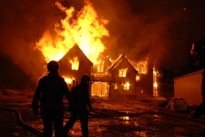
- wrap a wet blanket around yourself;
- cover nose and mouth with damp cloth;
- use the nearest emergency exit;
- don’t panic;
- open the window of the room you are in;
- raise the alarm and call the fire brigade (if possible);
- yell “Fire” to alert others;
- stay close to the floor;
- if you see smoke, evacuate the building quickly and quietly.
- While-watching (Етап перегляду відео).
T.: So, pupils watch videos very attentively and put down some new ideas which you don’t mention in your posters.
Учні повинні дивитися відео і записувати правила поводження, яких вони не мають у своїх плакатах.
- Post-watching (Етап перевірки розуміння змісту переглянутих відео). Speaking.
Pupils discuss pieces of advice for people during earthquake and fire which they didn’t write in their posters.
Учні обговорюють правила поводження людей під час землетрусу і пожежі, яких вони не згадали у своїх плакатах.
T.: What new ideas do you hear in videos?
-
Reading (Розвиток навичок читання)
- Pre-Reading (Етап підготовки до читання).
T.: Look and guess. Tick the true sentences.
Вчитель роздає роздатковий матеріал (Додаток 2). Учні повинні відгадати правильні речення.
- While-Reading (Етап читання).
T.: Read the text and check your guesses.
Учні отримують текст і перевіряють правильність своїх здогадок.
A hurricane is a very big storm with heavy rain and strong winds. Hurricanes can be a thousand kilometres across. They last for more than a week. The winds are 120 to 300 kilometres an hour. Sometimes the hurricane winds produce tornadoes.
Hurricanes come between May and November when the ocean is warm. A hurricane starts over the ocean and moves from east to west. It moves about 25 kilometres every hour. When it comes on land, it causes terrible floods and people must move to a different town. Some years there are a lot of hurricanes and some years there aren't many.
Every hurricane has a name. In August 2005 there was a very strong hurricane in the USA. Its name was Katrina. The winds destroyed many houses, trees and cars and there were terrible floods, especially in the beautiful old city of New Orleans. Many people died. It was the worst natural disaster in the history of the USA.
- Post-Reading (Етап перевірки розуміння змісту тексту)
T.: Are the sentences True or False?
Учні отримують завдання із реченням, вони повинні визначити, чи ці речення правдиві, чи ні, відповідно до тексту.
Write True or False.
- A hurricane is a very big snow storm . (False)
- Hurricanes come between November and May. (False)
- Hurricanes move about 25 kilometres every hour . (True)
- There are a lot of hurricanes every year. (False)
- Every hurricane has a name. (True)
- The worst natural disaster in America was in 2005. (True)
Заключна частина уроку
- Giving the home assignment (Повідомлення домашнього завдання).
T: At home you have to do this puzzle. Your task is to find the hidden words. Also you will have to make a project about one of natural disaster. (Учні повинні розв’язати кросворд (Додаток 3), а також виконати проект про одне із стихійних лих).
- Summarizing and evaluation (Підсумок уроку).
T: “Our lesson is almost over. I hope you like it and had fun. Thank you for your work. I think our lesson has been a success. All of you were active today and worked carefully. Your marks are... Thank you very much for your work. The lesson is over. Good-bye.”


про публікацію авторської розробки
Додати розробку
